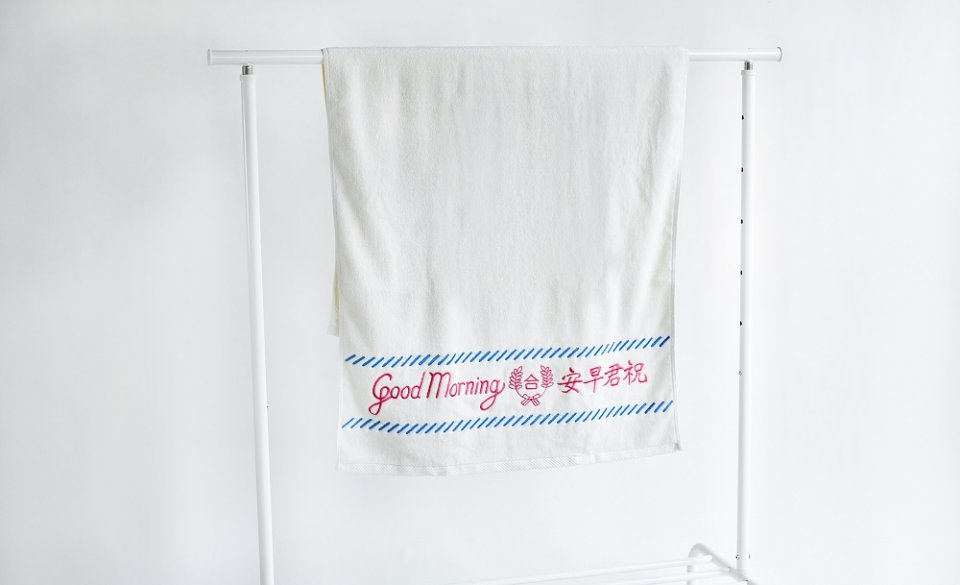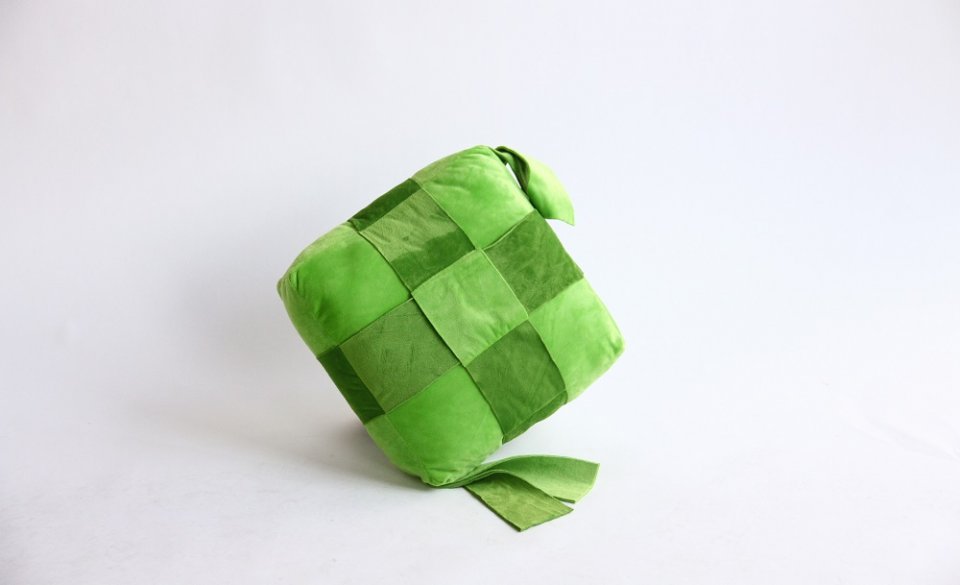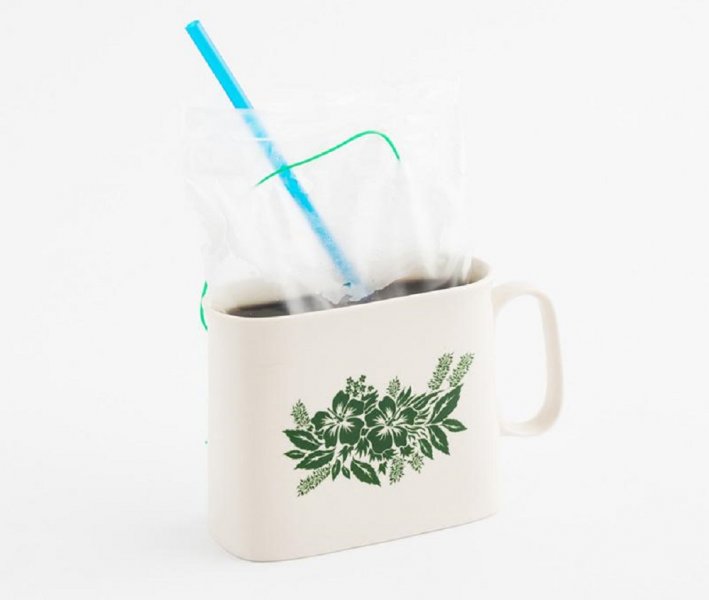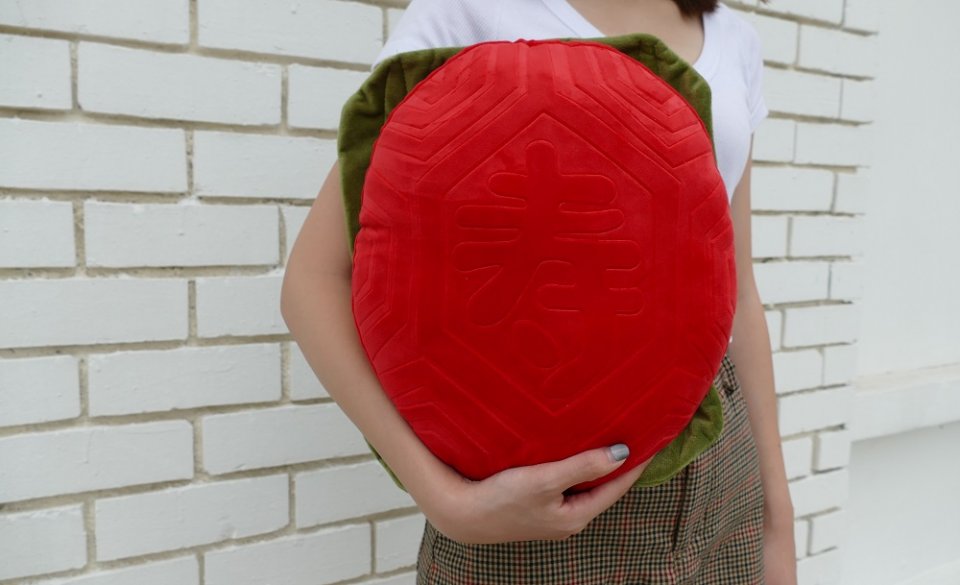In defence of the ang ku kueh cushion
A look behind the brand that catapulted local nostalgia
Ah, the ang ku kueh cushion. Never has a stuffed toy been so divisive; some love it, others deride what it represents—loosely, the commercialization of something as sacred as heritage. Yet, such fierce dialogue around the cushion (which shall henceforth be referred to as the AKK cushion) never existed before 2015. Jonathan Hee figures it was the SG50 fanfare that first fanned the flames.
“If you think back, before SG50, there weren’t many of this kind of products,” he said. “Everyone was feeling that patriotism somehow; then we were like just try lor.”

Meykrs products
Hee is the 31-year-old founder and director of Meykrs, otherwise known as the originator of the AKK cushion. Born in 2015, the retail brand was previously the manufacturing arm of a larger company called Souvenirs from Singapore, which launched 50 items based on the SG50 icons. When the cushions took off, Meykrs eventually branched off into its own brand, while Souvenirs later rebranded into Red Republic—a more sophisticated line of heritage-themed products.
On differentiating Meykrs and Red Republic, Hee said: “To put it bluntly, Meykrs is more in your face. We take nostalgia and we try to fit it into products that remind you of the past.”
A bold statement, but cultural advocates should put aside their pitchforks. For one, Hee and his colleagues never imagined the icon status the AKK cushion, which has sold over 8,000 pieces, would gain today. At the time, they had been churning out corporate gifts for seven years, producing banal batches of pens and umbrellas with company logos. Creating the cushions was a fun side project.
“We enjoyed doing this,” he said. “You must understand that when we came together it’s because we felt it was fun. At that time we didn’t know where it would go; we were all ready to try, fail, separate. But then it grew until we couldn’t cope (treating) it as a side project anymore.”
And while the AKK cushion has exceeded its other plushie counterparts in notoriety, Meykrs’ very first product was actually the 3D iced gem biscuit cushion. Hee recalls first suggesting it in a meeting for Souvenirs from Singapore, and having it turned down for its mismatch in style.
“I thought it would be funny if we made it a thing. So we just did it on our own—one product. When the sample came, it was really funny; we did it detachable, so you can pluck out the gem biscuit on top. The idea was that I could sell it separately, so you could just change (the colors),” he chuckled.
The gem biscuit cushion received mixed responses; 50/50 from both colleagues and clients. They worked on producing a second batch with more colors, did away with the detachable function, and launched it in local furniture store HipVan. Two months later, they released the AKK cushion.
Since the first cushion’s conception, Meykrs and Red Republic have expanded their catalogue to include over 150 locally themed items. Their upcoming collection will include shot glasses fashioned after kopitiam beer mugs, a patchwork-print umbrella, and a Good Morning bath towel—all of which will be released in time for National Day. So how do they choose which aspects of heritage to turn into a product?

Red Republic Good Morning Towel, $24.90

Here's one MRT you can (re)lie on; Meykrs Train Bolster, $29.90
The process is more practical than anything. “I could feed you a reason ‘oh I used to eat this’; but we both know it’s nonsense,” Hee said.
“How we do it is we have a list of items we can relate to—for example, there are all the kuehs. The idea is that this genre of products is nostalgic. It could be gem biscuits, it could be ang ku kueh; it doesn’t really matter because to us Singaporeans, we relate it as that kind of food, when you’re young, the ‘childhood food’. But then there’s also the design element—not all concepts can be made into nice products; we don’t want to force it.”
Creating a doorstopper in the likeness of a rainbow kueh, for example, makes more sense than if it were a gem biscuit, regardless of how popular the latter is. Calling the design aspect “the killer”, Hee said the brand has had to scrap many ideas because the concept just would not fit design-wise. Rejects that never saw the light of day include a mynah bird plushie that wound up looking too much like an Angry Bird knock-off, and a cosmetic pouch meant to look like dim sum carriers. The latter even comes with “bamboo basket” layers.
Like a father to his children, Hee is fiercely protective of the many designs he’s contributed to the brand. “In its defence, it’s a very first prototype; it’s quite far from what we had in mind,” he said sheepishly, in response to our bemused expressions when regarding the dim sum pouch. If so, why not keep working to improve it?
“Because you can’t tell (from the first look)!” he said. “If I have to start from zero, I can only get it to 50; I can only improve it that much from the first prototype. If no one can get the first prototype, it’s an uphill battle.”

Products like this Ketupat Cushion ($29.90) are instantly recognizable
There’s also the problem of manufacturing a sellable product. Hee has dreams of bringing to life a “genius idea”—a ceramic humidifier in the shape of a char siew bao. When turned on, the ‘bao’ would look like it’s steaming. But after researching and doing the math, they realized they would have to price it around $60 to $80. It was deemed too expensive, and the idea too was scrapped.
It wasn’t just the cost price that put them off, said Hee. His research showed that there are humidifiers in the market going for the same price. “I can even make my quality of humidifier as good as those $80 ones. But the problem is that novelty items are always perceived as not for function—which means that if I made one, people wouldn’t be willing to pay the same price.”
Hence the brand runs by two ruling questions: Would you buy this? If yes, how much would you buy it for? The first is easier to pass; the second often halts the process.
“As much fun as it is to do this, fun can’t take you far,” said Hee. “We have to be very practical also, which is the part I didn’t like. I wish the story was nicer, but the process of thinking of those nostalgic items is real. The worst thing is when you put it on your desk and it doesn’t make sense—like why is this, this?”
Profiting off nostalgia isn’t as easy as it seems either. Despite their popularity, Hee revealed that Meykrs is nowhere near producing on a mass scale just yet. Factors like a high minimum order deter both smaller and larger companies from placing orders with them.
They were previously in talks with a local museum to make themed items, such as cushions corresponding to actual artefacts in the museum. After extensive discussion, the institution was unable to commit to the minimum order, and pulled out.
While the collaboration fell through, it is perhaps the most explicit case to counter the argument that Meykrs are capitalists taking advantage of culture.
“Even the museums are considering using these (cushions) as a tool to bring in more viewership, more attention,” said Hee. “The only visitors they get are the arts scene people, which in all fairness are not a lot.”
“Before 2015, where do you see such items? Museums, atas stores like the Farm Store; why is design only for atas people? So when we created the brand, the goal was to bring design to the masses,” he added.

Red Republic Kopi Bag Mug
It might have worked too well, given that the company’s success quickly spawned a slew of copycats. Hee said after launching the first cushion, they immediately spotted netizens online asking whether Chinese wholesaler Taobao sold knock-offs. They were also faced with local companies taking advantage of lax copyright laws in Singapore; the brand’s Good Morning mug and Jerry Can were replicated within months.
“We do have our fair share of corporate client copycats. There was a mall that gave out peng kueh (pink rice cake) cushions, but they changed the design; they changed the Chinese word. And that’s allowed,” Hee shared.
“It’s quite painful, because they were all about the money—maybe that’s how the designers feel (about us commercializing heritage). Because they gave out something to celebrate local, but they didn’t ask the original creators of the product.”
Applying for patents on their more popular products doesn’t do much either. In Singapore, the Patents Act states that “a patentable invention is one that satisfies the following conditions: the invention is new; it involves an inventive step; and it is capable of industrial application”, and is valid for 20 years with annual renewal fees. However, consultants advised Hee against patenting even the AKK cushion, as copycats would be able to get away with simply changing minor details.
“And it’s not cheap to patent something—a few hundred dollars,” he added. “Why would I patent something when you can just change one thing? It doesn’t make sense.”

A single character could be their downfall
Thankfully, the AKK cushion remains relatively uncopied; the closest copy Hee has seen is a 2D version with just a print of the kueh. “At least the Singapore designers have an unspoken code that we don’t do each other’s things—the concept (of 3D cushions) is fine; if you do a curry puff cushion, I’ll be sian lah, but we won’t flip table.”
Ultimately, Hee doesn’t see himself or Meykrs as a kickstarter of the local nostalgia wave sweeping the nation. In fact, he acknowledges that AKK cushion aside, there were other local brands around before Meykrs (such as LOVE SG) more deserving of the “pioneer” badge.
“We didn’t really start it; we just gave the all-clear that it works. As I’ve said, with the manufacturing thing, quantity always scares people. But I think once they’re confident, like ‘hey this brand can do that and they’ve been around quite long’, then suddenly you see an influx of long-time brands starting to do more adventurous things.”
“You can see more risk and commitment in their products now,” he added.
Could critics then just be a little too harsh on this humble local retail brand? The down-to-earth Director posited that locally themed products could actually be a step towards Singapore finding its own, uniquely Singaporean, style—something lifestyle stores like Naiise and Supermama have been championing for a while now. In continuing to pave the way, Meykrs and Red Republic will soon be available in their own brick-and-mortar store in Plaza Singapore, called area65, opening tomorrow (Aug 1).
“At the end of the day, we want to do fun products; we want Singaporeans to look at it and go ‘hurhurhur’. If you ask me on the first day what the goal is, it’s to ‘hurhurhur,’” he grinned.
Pick up a wretched ang ku kueh cushion for yourself, or shop the new collection dropping Aug 1, here.
Advertisement